How You Can Enact Change Theory in Higher Education
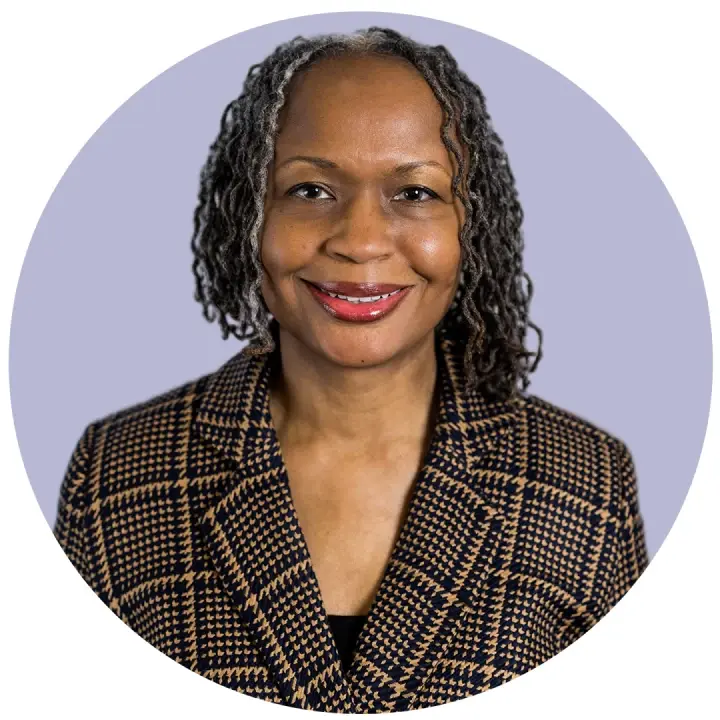
6 Mins
Updated: July 25, 2024
Published: June 10, 2024
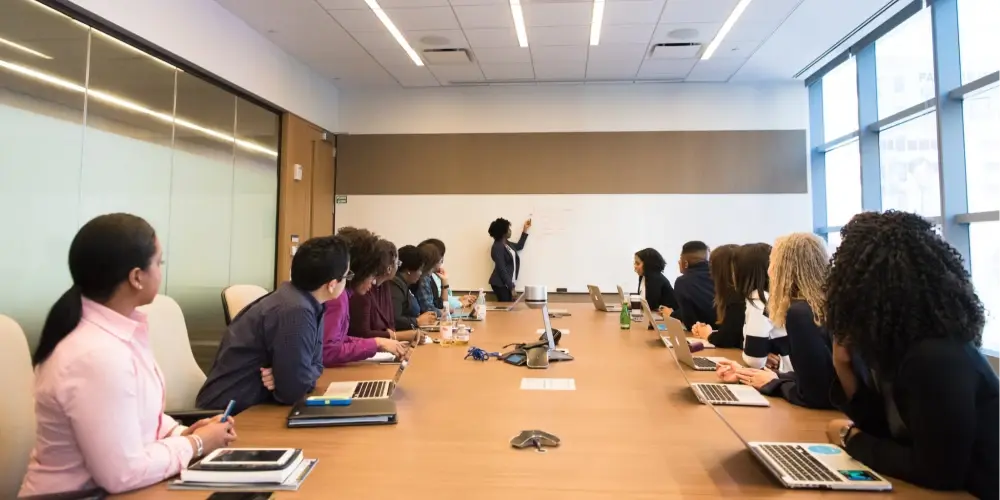
Change theory, a field in education that has evolved significantly over the past century, offers invaluable insights into the intricate process of implementing change at an individual and organizational level.
Effectively applying these theories is a critical task for university executives—especially considering the digital advancements, innovative instructional practices, and changing market landscape these institutions face. Change theory is applied to improve all areas concerning teaching, such as:
- Developing personalized lesson plans that better address individual barriers and resistance to change
- Building change capacity so departments can efficiently adopt new teaching modalities
- Overhauling curricula so learning better prepares students for real-world application
- Adopting hybrid learning models to make up for the declining in-person enrollment
However, despite the academic focus and strategic imperatives, leaders still need to work on applying change theory in alignment with their organizational goals. Worse, only 13% of higher education institutions invest in critical change initiatives like digital transformation.
Today, we’ll look at change theory, how it’s applied across higher education, and how Prosci applies decades of change management expertise to enact change at these institutions.
What Is Change Theory in Education?
Change theory is a framework that leaders across higher education use to drive efficient change on an organizational level. It attempts to explain the factors that help and hinder people from adopting new processes and systems while outlining why change can sometimes fail.
In higher education, change theory is particularly helpful as institutions work through pressing challenges:
- Meeting the learning needs of students in a digital era
- Updating critical components of digital infrastructure
- Match the shifting paradigms of academia and students
- Addressing resistance to change in the name of upholding tradition or protecting reputations
Change theories applied in educational institutions emerged from work in several fields—such as psychology, sociology, organizational behavior and management science—and have evolved to focus on specific organizational issues.
Researchers and funding agencies have recognized the need to understand how change occurs in unique environments like universities, colleges and teaching hospitals. A systematic review of evidence-based teaching practice can provide a solid foundation for understanding the change process.
Now, let’s examine why having a change theory in education is so important.
Addressing common objections and challenges
Higher education is quickly changing. Universities and colleges deal with operational issues impacting the financial bottom line and student long-term outcomes. As fewer students enroll in or complete degree programs, the old ways are increasingly being questioned.
Curriculum overhaul and remote learning options are viable solutions. However, these institutions still struggle to implement these changes due to resistance and other impediments to growth, like:
- Reluctance to alter established practices
- Fear of the unknown
- Concerns about the effectiveness of new initiatives
- Long implementation cycles
- Investment to train staff and faculty
- Measurement of change ROI
EdTech company D2L states that 70% of higher education change initiatives fail to meet goals because of employee resistance and inadequate management support.
Change theory is a proactive solution to resistance because it predicts all participant reactions to a new approach, including negative ones. To ensure the effective application of change theory, faculty heads, and organizational leaders must:
- Communicate "why and how" – Convey the purpose behind the change and the steps towards implementation.
- Equip teams – Provide training and resources to make staff receptive to change and help them navigate the process confidently.
- Foster collaboration – Create a participative environment where feedback is valued, encouraged and acted upon.
- Role-model the changes – Ensure that leaders provide a key example of institutional support for the change by adopting and applying new processes.
This strategy helps everyone understand and prepare for change and encourages everyone to work together toward a common goal.
Change Theory in Action—Examples in Education
Now that you better understand change theory, let’s look at some prominent examples of change theory in action. Here are a few major university initiatives that applied change theory to improve student learning outcomes and other organizational challenges.
The FIRST Project
One notable example is the Faculty Institutes for Reforming Science Teaching (FIRST) Project. The FIRST Project aimed to improve undergraduate science education by engaging faculty members in a series of workshops designed to enhance their teaching methods and better address the needs of students. The project was grounded in the assumption that change must begin with the faculty at the forefront of education for change to be effective.
By focusing on developing faculty teaching practices, the FIRST Project facilitated a shift towards more student-centered learning approaches, which improve student engagement and learning outcomes.
This initiative is a prime example of change theory in action, where the change process starts by empowering key change agents—in this case, the faculty—and leads to a broader impact on the educational system.
Departmental Action Teams
Departmental Action Teams (DATs) are cross-functional teams composed of faculty, students and staff that work collaboratively to address specific issues within a department. DATs aim to create sustainable changes by building the change management capacity of key change agents within the organization.
For instance, the University of Colorado at Boulder uses DATs to help improve student educational outcomes across various departments. By involving faculty and department heads, these DATs develop and implement changes that are more likely to be accepted and supported within the context of humanities, engineering or science departments, leading to lasting improvements in educational practices across the board.
DATs are a great example of change theory applied in higher education. It’s a generalized approach that empowers specific departments within the larger institution in a contextual manner.
Partnership for Undergraduate Life Sciences Education (PULSE)
The Partnership for Undergraduate Life Science Education (PULSE) initiative is a collaborative effort between higher education institutions responding to calls for significant improvements in undergraduate life science education. The PULSE initiative represents a concerted effort to transform life science education at colleges and universities across the United States.
PULSE refers to its overall initiative as a “theory of change,” a strategic model applied at the program level in higher education settings. Theory of change differs in that it outlines the how and why behind a change while change theory focuses on its implementation.
In the case of PULSE, the theory of change consists of the following components, which are implemented using change theory:
- Core capacities developed in each department
- Transformation strategies that new capacities would help implement
- Departmental changes that each transformation strategy would facilitate
The collaboration of institutions under PULSE is focused on aligning life science education with the rapidly evolving field itself, ensuring that the curriculum is relevant and comprehensive. It prepares students for future challenges in research and various scientific fields.
PULSE Theory of Change
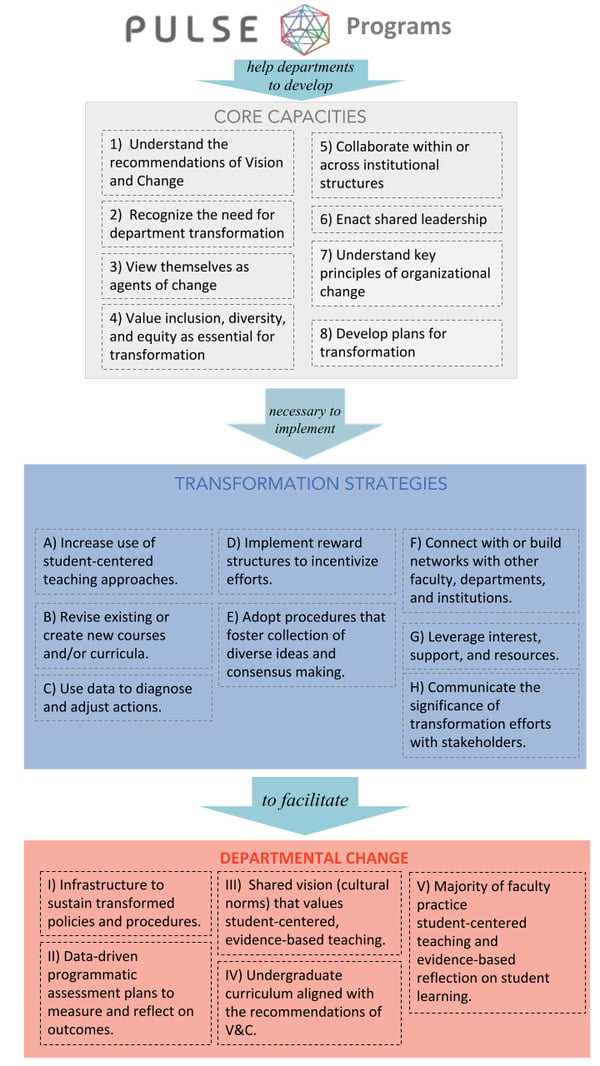
Moreover, PULSE's focus on implementing the recommendations of a national report highlights its strategic approach to change. This approach ensures that the changes made are:
- Evidence-based
- Targeted to specific outcomes
- Aligned with broader goals in life science education
The initiative's success in driving change across numerous institutions demonstrates the power of collaborative efforts and strategic planning in enacting meaningful and sustainable improvements in education.
A Template for Change in Higher Ed—The Prosci ADKAR Model
The Prosci ADKAR® Model is an example of a change theory in action. It provides a structured framework for implementing change, focusing on the people involved, how they experience the change process, and the preconditions necessary for successful long-term change. Prosci ADKAR Model focuses on five key stages: Awareness, Desire, Knowledge, Ability and Reinforcement.
Prosci ADKAR Model
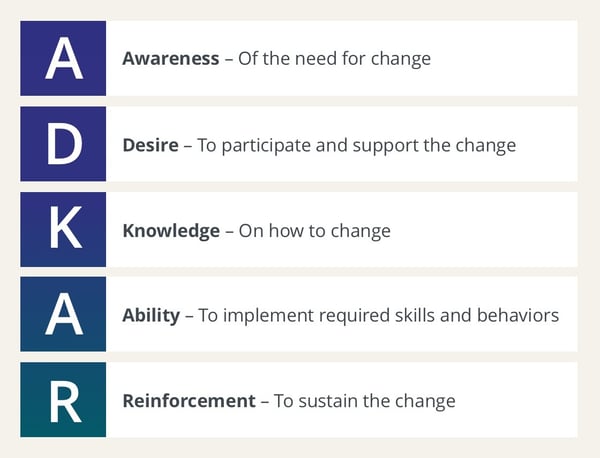
ADKAR offers a flexible, adaptable approach change leaders can use to support people through unique changes within their unique institutions. For example, a college might apply the Prosci ADKAR Model to navigate resistance to change surrounding the rollout of a new eLearning program. This would include:
- Raising awareness among faculty about the need for eLearning to enable students and themselves to succeed in a digital future
- Fostering a desire for change by engaging with resistance and establishing a dialogue around solutions
- Providing the necessary training and resources to help faculty understand how to use the new program
- Enabling faculty and staff to demonstrate their ability to use the eLearning program in their courses
- Ensuring that there are mechanisms within the department to reinforce and sustain the new practices
Considering D2L’s assertion that nearly three-quarters of universities and colleges struggle with resistance during major transitions, the Prosci ADKAR Model is an excellent application of change theory for higher education, especially as part of an organizational approach to managing change like the Prosci Methodology.
Now, let’s look at how Prosci has helped some of the largest institutions in the country drive change.
How Prosci Enacts Change in Higher Education
As a recognized leader in change management solutions, Prosci has a track record of facilitating impactful change in higher education. Its research-based methodology, models and tools are built on decades of experience mastering the people side of change. The Prosci Methodology and training programs help organizations successfully adopt change and reap the intended benefits. The case studies below showcase the application of Prosci change theory across education:
University of Virginia (UVA)
As an institution with over 200 years of tradition and process, the University of Virginia (UVA) struggled with change fatigue and projects needing to meet outcomes. As a result, UVA embarked on an Organizational Excellence program and partnered with Prosci to enhance its capacity for change.
Prosci training programs were utilized to train over 50 UVA staff members, equipping them with the skills to manage change effectively. Key outcomes from the partnership with Prosci included:
- A centralized project portfolio framework to ensure alignment across initiatives
- A significant increase in project ROI due to enhanced change capabilities
- The establishment of a common language for change, fostering better communication and collaboration
Organizational Excellence Program
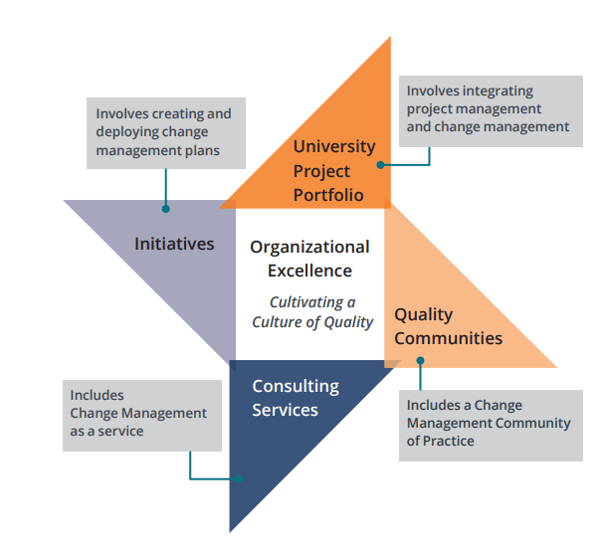 Five years after the change training program was initiated, UVA had implemented hundreds of improvements while realizing annual savings of over $20 million.
Five years after the change training program was initiated, UVA had implemented hundreds of improvements while realizing annual savings of over $20 million.
University of California, San Diego (UCSD)
UCSD, aiming to embed change management practices throughout the organization, initiated a strategic plan to bring about campus-wide changes. The Prosci Methodology was chosen for its adaptability and effectiveness in large organizations. UCSD’s collaboration with Prosci led to:
- Large-group training sessions for awareness and role-specific change management
- The creation of various learning opportunities tailored to the needs of the institution
- Over 90% of the 500+ staff attendees found the tools and knowledge applicable to their roles
- A shared language for change among executives, managers and teams, leading to more people-centric planning and execution
The change initiatives facilitated by Prosci at UCSD were so successful that the University of California administration explored applying the process across the entire network.
Prosci Change Theory in Action for Higher Education
Use Prosci-proven strategies to drive change efficiently in a university, college or other academic environment. Our empirically tested 3-Phase Process and the Prosci ADKAR Model help executives and change managers turn theory into action, with attention to the specifics of your educational context. Whether you need to improve student outcomes or implement a new ERP, Prosci helps meet your institutional goals.
To see change theory in education come to life, visit our change management in higher education page, where you will learn how the Prosci Methodology and change theory help leading institutions nationwide.


